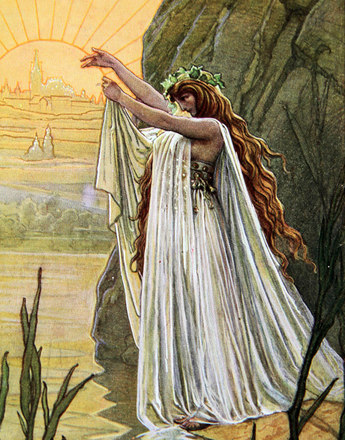-

Ludwig Kossuth, (based on a painting by Kurowski), illustration, 19th century
Copyright: Schloß Schönbrunn Kultur-und Betriebsges.m.b.H./Fotograf: Alexander E. Koller
-

Opening of the first Hungarian Imperial Diet in Pest on 5 July 1848, lithography, 19th century
Copyright: Schloß Schönbrunn Kultur-und Betriebsges.m.b.H./Fotograf: Alexander E. Koller
In the Vormärz era, a new generation emerged in Hungarian ‘patriotic’ circles, a young and more radical movement that became increasingly assertive in its claims for nationhood, demanding a special constitutional status for Hungary within the Monarchy.
Vienna reacted to the increasing pressure from Hungary with concessions and in 1844 agreed to the introduction of Hungarian as an administrative and judicial language, regardless of the fact that almost two thirds of the population were not Magyars. This resulted immediately in protests by other language groups, particularly the Croats, who enjoyed special status within Hungary. Vienna supported the other peoples as a means of stifling Magyar nationalism.
This nationalism began to show increasingly separatist tendencies, however. The movement was led by Lájos Kossuth (1802–91), a lawyer and publisher of the magazine Pesti Hírlap (Pest Journal), which developed into the mouthpiece of the radical opposition, so much so that it was banned by the government in Vienna in 1844.
In 1847 Kossuth became a member of the Hungarian Diet in Pressburg [Bratislava], where he set the rebellion in motion with a revolutionary speech on 3 March 1848 in which he made a passionate demand for political co-determination and a constitutional monarchy.
The Diet, initially an assembly of nobles, was ‘hijacked’ by the radical intellectual supporters of Kossuth and transformed into a Hungarian – and more specifically a Magyar – national assembly. The concerns of the other language groups in the country were assuaged with half-hearted concessions, such as the right to schooling in their language. Kossuth rejected all more far-reaching demands. For him Hungary had only one nation, the Magyars, and the other ethnic groups were merely ‘tribes speaking other languages’.
This resulted in the rejection of the Hungarian revolution by the Croats, Slovaks, Serbs and others, who were just beginning to define themselves as nations and enjoyed the protection of the central government in Vienna. The ensuing civil war weakened the Magyars, who were waging a war of independence with Vienna at the same time. The situation escalated when Croatian troops led by Count Josip Jelačić invaded southern Hungary.
Kossuth, by now elected regent, took over the leadership and appealed for a ‘defence of the fatherland’. A revolutionary army of 170,000 troops, called ‘Honvéd’ or territorial army, was mustered. Kossuth ordered it to march on Vienna to provide military support for the October rebellion against the Habsburgs. The Hungarian units were repulsed at Schwechat near Vienna by Jelačić’s troops, who had advanced into Austria.
Whereas the revolution in Vienna was defeated with the capture of the city by the imperial army on 31 October 1848, the war of independence continued in Hungary. On 14 April 1849 the break with the Habsburg dynasty was effected and Franz Joseph was deposed as king of Hungary. The Honvéd troops enjoyed some initial success. After the capture of Ofen [Buda] in May 1849, large parts of the country were under the control of the revolutionaries.
The situation in the country was very unstable, however. The revolution was seen as a war of independence by the Magyars, and the lack of support for the goals of the Hungarian separatists by the non-Magyar nationalities was evident. Considerable blood was shed in the prolonged struggle by Romanian, Slovakian and Serbian irregulars fighting the Honvéd troops. National animosities were exacerbated, and attacks on local representatives of the hated Hungarian state authority were met by mass executions ordered by the revolutionary courts. The Hungarian Honvéd units responded to the guerrilla methods of their opponents by burning entire villages to the ground.
The Hungarian struggle for independence came to an end after the victories of the Austrian army in Italy gave the court in Vienna more room for manoeuvre. The young Emperor Franz Joseph appealed to Russia for assistance, and Tsar Nicholas I agreed immediately, because the news of the revolution in Hungary had already inflamed the situation in Russian occupied Poland. The Magyar idealists were no match for the full force of the Russian army. The Hungarian war of independence ended on 13 August 1849 with the capitulation of the revolutionary army in Világos near Arad.
Translation: Nick Somers
Hanák, Péter: Die Geschichte Ungarns. Von den Anfängen bis zur Gegenwart, Essen 1988
Markus, Adam: Die Geschichte des ungarischen Nationalismus, Frankfurt/Main u. a. 2013
Rumpler, Helmut: Eine Chance für Mitteleuropa. Bürgerliche Emanzipation und Staatsverfall in der Habsburgermonarchie [Österreichische Geschichte 1804–1914, hrsg. von Herwig Wolfram], Wien 2005
Tóth, István György (Hrsg.): Geschichte Ungarns, Budapest 2005
-
Chapters
- The Magyars and the Habsburg Monarchy
- From ‘Natio Hungarica’ to Magyar nation
- Pride of the nation: the Hungarian nobility
- The Hungarian war of independence 1848/49
- From neo-absolutism to Compromise
- Élyen a Magyar – long live the Magyars! Hungarian Magyarization policy
- The crisis of dualism
- István Graf Tisza: Hungary’s ‘strong man’




